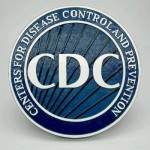 BARRINGTON, Ill GE Healthcare, one of the leading providers of healthcare information technology, today announced its selection by the Centers for Disease Control and Prevention (CDC) to provide extensive surveillance data for H1N1 and seasonal influenza activity throughout the United States. Every 24 hours, GE Healthcare reports information gathered from its nationwide electronic database of nearly 14 million patient records to help the CDC monitor the spread of the H1N1 virus in near real-time.
BARRINGTON, Ill GE Healthcare, one of the leading providers of healthcare information technology, today announced its selection by the Centers for Disease Control and Prevention (CDC) to provide extensive surveillance data for H1N1 and seasonal influenza activity throughout the United States. Every 24 hours, GE Healthcare reports information gathered from its nationwide electronic database of nearly 14 million patient records to help the CDC monitor the spread of the H1N1 virus in near real-time.
Daily reports upload from GE Healthcare`s Medical Quality Improvement Consortium (MQIC), a repository designed with HIPAA-compliance parameters, of anonymous clinical data and best practices. Participating physicians automatically contribute de-identified data to MQIC each day through normal use of GE`s Centricity EMR when they document information collected during patient visits to physician offices and clinics. Operated by GE Clinical Data Services, which also provides research and analytical services, the MQIC database is growing at a rate of nearly 30 percent each year. In peer-reviewed studies the database has been validated as representative of demographic and co-morbidity averages in the U.S. population1.
 MQIC collates clinical data documented by primary-care physicians using GE`s Centricity Electronic Medical Record (EMR), giving the CDC tools to help track clinical symptoms such as fever, nausea and chills, prescriptions written, and vaccination rates, as well as variables such as procedures performed, pregnancy
MQIC collates clinical data documented by primary-care physicians using GE`s Centricity Electronic Medical Record (EMR), giving the CDC tools to help track clinical symptoms such as fever, nausea and chills, prescriptions written, and vaccination rates, as well as variables such as procedures performed, pregnancy
and patient age, within 24 hours of being documented in thousands of participating doctors` offices across the country.
“We are pleased to help the CDC monitor this important public health issue,” said GE Healthcare IT Vice President and General Manager Jim Corrigan. “This is a strong example of the power of digitizing the nation`s medical records. With EMR data, not only are we able to accelerate the reporting of any aggregate changes to the health of the U.S. population, we`re able to provide valuable and timely clinical data to health professionals.”
According to the CDC`s Office of Program Grant Officials, the CDC selected GE Healthcare for the database`s built-in reporting capabilities. The resulting information helps the CDC better understand the characteristics of H1N1 outbreaks and determine who is at most risk for developing complications from
the virus. Traditionally, this data is collected using insurance claims data, a process with a significant lag time.
“Using MQIC, the GE Centricity EMR`s H1N1 surveillance reports communicate clinical findings at an early point of detection as many patients with milder flu symptoms will visit their primary care provider, instead of a hospital,” said Dr. Peter Basch, Internist with MedStar Health, Washington, DC and program participant. “The data passed along by doctors is a clinically-accurate representation of H1N1-related symptoms and trends, which enables CDC researchers to track hotspots as the flu season evolves and quickly communicate that information to healthcare providers to improve awareness and response for
better clinical outcomes.”
1 Brixner, D. 2007, “Use of Electronic Medical Record (EMR) Data in Outcomes Research”, International Society for Pharmacoeconomics and Outcomes Research 10th Annual European Congress, Dublin, Ireland.
